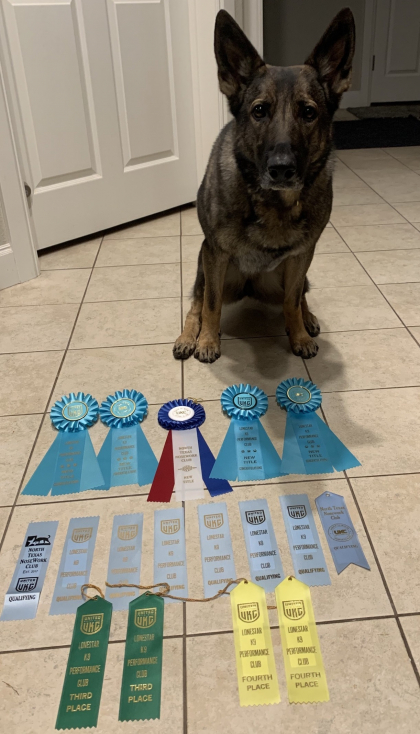Press Releases
VetStem Cell Therapy Gets German Shepherd Back to Competition after Cruciate Ligament Tear
Kim, a German Shepherd, received VetStem Cell Therapy for a partially torn cruciate ligament.
2023-05-23 --
Kim, a German Shepherd, was originally trained as an agility dog. Unfortunately, six months into her training, she partially tore her cruciate ligament in her right knee. After several appointments with her regular veterinarian and her holistic veterinarian, Kim’s owner decided she wanted to avoid invasive knee surgery and elected to pursue treatment with VetStem Cell Therapy.
Kim’s veterinarian, Dr. Douglas Stramel of Advanced Care Veterinary Services, is a Certified Veterinary Pain Practitioner that has been utilizing VetStem Cell Therapy since early 2008. To begin the VetStem process, Dr. Stramel collected a sample of fat tissue from Kim’s abdomen during a minimally invasive anesthetic procedure. The fat was shipped to the VetStem laboratory where technicians processed the fat to extract and concentrate the stem and regenerative cells contained therein. Three doses were prepared and shipped to Dr. Stramel for injection and the rest of Kim’s cells were put into cryopreservation for potential future use. Approximately 48 hours after the initial fat collection procedure, Kim received an injection of her own stem cells into each knee as well as an intravenous injection.
According to her owner, Kim had a great response to stem cell therapy and her knee is still doing well. She was even able to return to competition! Her owner stated, “Kim’s stem cell injection has provided her an opportunity to live her best life. We decided to change sports, so she now does AKC Rally and UKC Nosework. She continues with rehab to keep her knee in the best possible shape. Her rehab includes cold laser, underwater treadmill, and acupuncture therapy every 2-3 months.”
Approximately two and a half years after her initial stem cell treatment, Kim received a follow-up round of injections. Using three of her stored stem cell doses, Dr. Stramel injected both of Kim’s knees along with an intravenous injection. Repeat stem cell injections can be useful to keep the joints and their supporting structures strong, and to help keep symptoms of osteoarthritis under control. Kim’s owner maintains her stem cell bank in the event that she needs additional treatments down the line.
Unfortunately, cruciate ligament rupture is one of the most common reasons for hind limb lameness, pain, and subsequent knee arthritis in dogs. Additionally, according to the American College of Veterinary Surgeons, 40-60% of dogs who injure one cruciate ligament will go on to injure the other cruciate ligament in the future. Because of this, many veterinarians choose to treat both knees with stem cells, even when there is only one injured knee. While there are multiple treatment options available, both surgical and non-surgical, treatment with stem cells may accelerate and improve healing within the joint. Stem cells are regenerative cells that can differentiate into many tissue types, reduce pain and inflammation, help to restore range of motion, and stimulate regeneration of tendon, ligament, and joint tissues. According to surveys answered by owners and veterinarians, greater than 80% of dogs showed an improved quality of life after receiving VetStem Cell Therapy for orthopedic conditions.








